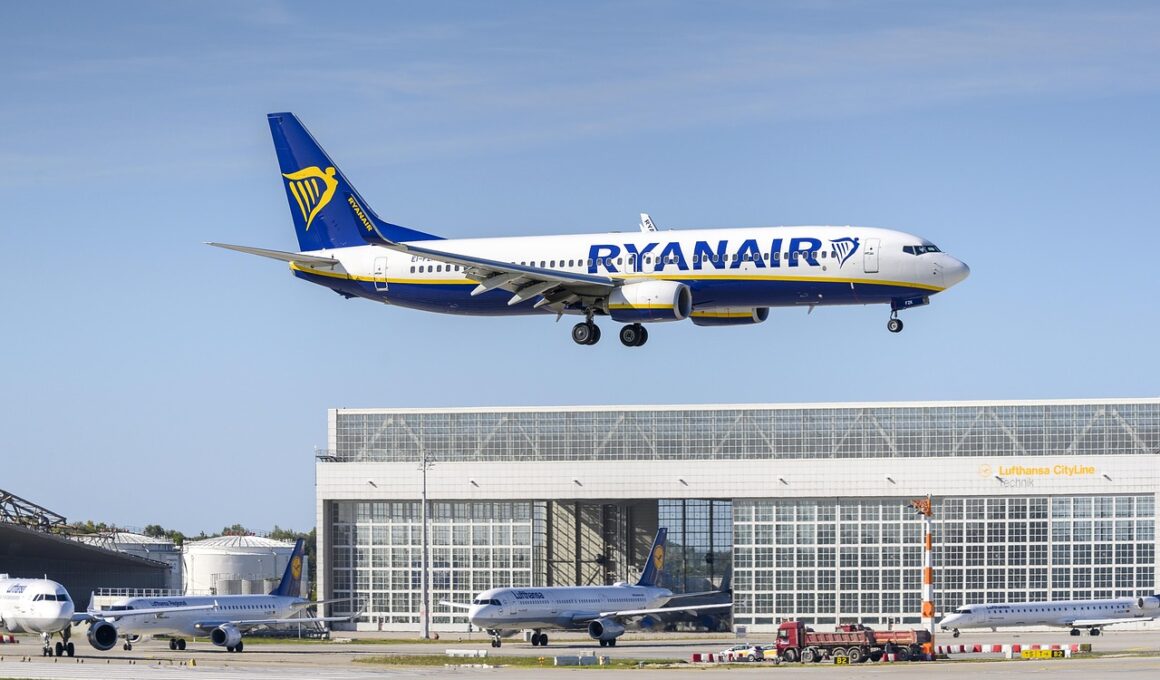Boeing 737 Max Crashes: Aviation Crisis and Corporate Response
The Boeing 737 Max crisis serves as a pivotal case study in crisis management, particularly within the aviation industry. Following two tragic crashes involving Lion Air Flight 610 in October 2018 and Ethiopian Airlines Flight 302 in March 2019, the world witnessed a significant disruption in air travel safety perceptions. The crashes, causing 346 fatalities, brought Boeing and its safety protocols under scrutiny. Many questioned how a company with a strong legacy could face such catastrophic failures. The case prompted investigations by multiple aviation authorities worldwide. Understanding the timeline of events that led to the crashes is essential for examining the crisis management strategies Boeing employed. The investigation revealed issues pertaining to the Maneuvering Characteristics Augmentation System (MCAS) and deficiencies in pilot training. As more details emerged, Boeing’s reputation suffered severely, emphasizing the need for effective crisis communication. The company’s initial responses focused on fighting back against allegations, a strategy that ultimately proved ineffective. This crisis highlighted the importance of transparent communication and swift action in building or regaining public trust during a corporate crisis. Efforts to manage the fallout varied, greatly influencing Boeing’s strategy moving forward.
Understanding the Crisis Management Framework
Crisis management encompasses a variety of strategies aimed at mitigating damage stemming from unforeseen disasters. In the face of a crisis, organizations must develop a comprehensive framework to navigate complex scenarios effectively. The Boeing 737 Max incident approaches this definition from multiple perspectives. First, recognizing the signs of potential crisis is crucial for timely intervention, encompassing both detection and response strategies. Boeing’s challenges stemmed from a failure to acknowledge early warning signs, which may have facilitated preventive measures. Without proactive crisis planning, organizations stall in their reactions, often exacerbating the repercussions. Secondly, the importance of crisis communication cannot be understated. Effective communication strategies involving key stakeholders can foster understanding and trust, stabilizing the organization’s public image. Boeing’s challenges in conveying timely updates during crucial moments of the crisis resulted in confusion among stakeholders, further damaging its reputation. Lastly, a thorough analysis of responses post-crisis provides vital lessons for corporate restructuring. Boeing’s attempts to implement safety improvements and the reshaping of its corporate governance structure demonstrate the intricacies involved in recovering from a crisis. By studying the Boeing case, organizations can adopt best practices to enhance their crisis management protocols.
Central to understanding the Boeing 737 Max crisis is the concept of risk management. Inadequate risk assessment concerning the aircraft’s design layout indicated underlying flaws in Boeing’s operational strategies as it worked toward rapid production. Prioritizing profit over safety has marked a troubling trend within large corporations. Investigators found that target pressures might have caused critical oversights for both the aircraft’s design and pilot training programs. Moreover, the failure to thoroughly consideration of MCAS enhancements prior to the plane’s introduction posed significant safety risks. As evidence emerged, it became apparent that Boeing’s operational protocols failed to keep pace with technological advancements. This oversight sparked fierce debate regarding regulatory oversight within the aviation industry. It became crucial subsequently to question whether existing safety regulations adequately addressed emerging technologies’ complexities. Consequently, the Federal Aviation Administration faced intense scrutiny regarding its regulatory role. Balancing innovation with safety standards is pivotal in safeguarding passengers and airlines. The outcome of this crisis illuminated the dire need for an industry-wide reassessment of risk management frameworks and a transition towards more rigorous protocol methodologies. In hindsight, lessons learned will define future policy shifts within aviation safety governance globally.
The Role of Leadership in Crisis Management
Leadership defines the direction during pivotal crises and significantly impacts how organizations navigate challenges. Boeing’s leadership decisions amid the 737 Max crisis played an essential role in shaping the public’s perception of the company. Initial responses from then-CEO Dennis Muilenburg began with an emphasis on engineering excellence and operational integrity. However, as the scope of the crisis deepened, the leadership faced criticism for an apparent lack of accountability. Effective crisis management demands transparent communication, especially from upper management. Boeing’s message often appeared to deflect blame, rather than accepting responsibility and outlining corrective actions. The delay in response and a minimal engagement with grieving families added to public dissatisfaction. Furthermore, the company’s choice to delay significant changes until receiving outside pressure exacerbated concerns regarding their crisis response strategy. In critical situations, decisions made by leadership can make or break organizational reputation. Strong, decisive leadership should express empathy while outlining pathways forward that simplify decision-making. Organizational resilience stems from recognizing the importance of constructing dynamics between responsible leadership and developed crisis management strategies, ensuring ongoing operational integrity during unforeseen events, and defining company values to customers.
Understanding stakeholder relations is imperative during a crisis. Boeing faced a complex network of stakeholders, including airlines, suppliers, regulators, and the flying public. Each group possessed unique concerns and expectations during the unfolding crisis, requiring tailored communication strategies. Addressing each stakeholder’s demands without undermining others is challenging, yet essential for maintaining credibility. In response to the 737 Max crisis, Boeing’s communication struggled to balance transparency with the inherent sensitivities surrounding tragic loss. Addressing airlines’ operational concerns while also offering reassurance to passengers proved daunting. During crisis management, establishing channels of open communication and fostering relationships is crucial. Boeing initially prioritized information dissemination to major airlines and stakeholders over the general public, which led to public backlash. Feedback from stakeholders plays an intricate role in directing a company’s response initiatives during crises. Hence, understanding different stakeholder relationships thoroughly influences a company’s overall crisis management effectiveness. Organizational culture can considerably alter stakeholder engagement strategies, emphasizing the essence of holistic communication practices. The Boeing case signifies the need for executing engagement strategies that encompass all stakeholders while remaining committed to open dialogue amidst challenging circumstances.
Lessons Learned for Future Crisis Management
The Boeing 737 Max crisis imparts critical lessons for managing future crises across various industries. Fundamental among these is the need for rigorous preemptive measures that enhance safety culture throughout organizational practices. This culture must prioritize transparency, from manufacturing protocols to pilot training methods. Companies must effectively engage with their regulators and stakeholders while upholding safety concerns at all organizational levels. Crisis communication should not only react to disasters but proactively create meaningful dialogue around potential risks. Furthermore, utilizing technology to monitor operational compliance can immensely bolster safety, providing organizations with critical data that shapes future protocols and training programs. Another key takeaway centers on the alignment of corporate governance with ethical standards, advocating transparency as a core value. Organizations can avoid reputational damage by embracing accountability in their decision processes, ensuring that systems prioritize the well-being of customers and employees. Post-crisis assessment plays an essential role in refining crisis management strategies and changing higher standards. Comprehensive evaluations of stakeholder feedback can shape future crisis frameworks, paving the way for a refined approach. Ultimately, the Boeing crisis illustrates the pressing need for ongoing adaptability and vigilance in crisis management.
The Boeing 737 Max tragedy serves as a poignant reminder of the critical intersection between corporate responsibility and public safety. As industrial landscapes evolve, companies must adapt their crisis management strategies to meet emerging challenges while ensuring accountability. Especially in technology-driven industries like aviation, establishing safety as the paramount goal is necessary. By recognizing historical failures and learning from them, organizations can reinforce their commitment to excellent standards. Understanding how Boeing’s response shaped its post-crisis recovery offers compelling insights into necessary strategic shifts. The aviation industry stands at a crossroads where both innovation and security must coexist harmoniously to restore stakeholder trust. This crisis has invoked broader discussions regarding the role of regulatory entities in building systemic checks and balances. Public dissatisfaction has sparked dialogue about the importance of future reforms in aviation oversight committing to rigorous protocols ensuring elevated safety measures. Rebuilding public confidence will require earnest commitment from the industry and regulators alike. Moving forward, emphasizing proactive, transparent engagement alongside improved risk management practices can enhance organizational resilience, ultimately safeguarding the future of aviation as a whole. Reflection on the Boeing 737 Max crisis encourages organizations to evolve their framework to approach crises better.
As the aviation sector reflects on the lessons broached by the Boeing 737 Max incident, understanding its layers of complexity becomes vital for driving progress. A commitment to reshape organizational practices prioritizes safety over profitability, charting a course to prevent recurrence of similar tragedies. This commitment places substantial demands on corporations and regulatory frameworks. The need for a shift in the corporate mindset toward risk assessment and strategic management continues to rise. Aviation relies heavily on public confidence, which can only be regained through an unwavering focus on safety and transparency. Building relationships with all stakeholders, from customers to regulators, to promote access to trustworthy information will form the bedrock of future crisis management paradigms, proving invaluable in averting disasters. Furthermore, facilitating ongoing training programs enhances personnel skill levels essential for effective risk management and crisis communication. Maintaining efficient feedback loops among interior and exterior channels will cultivate a robust safety culture. The road ahead necessitates a melding of advanced technology with grounded corporate ethics. Organizations can emerge from crises stronger through collective accountability and collaborative efforts. Learning from turbulence enables us to envision a safer future in aviation and beyond.


